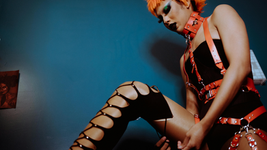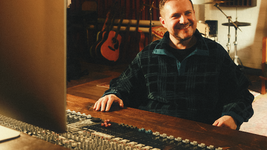London: A Drag Capital
- Gusta Matthews
- Aug 15, 2017
- 6 min read
Although drag has been around for decades, it has recently become increasingly popular. A cornerstone of LGTB+ culture, the success of RuPaul’s Drag Race has created a league of fans who can tell you exactly which challenge was won by whom and their look from the main challenge and their lipsyncs up to that point and their nail colour etc. etc. etc. It has become the new standard by which many judge queens, the glitz and glamour adding to the drama that comes hand in hand with a competitive reality TV show.
However, the queens on Drag Race are made to seem incredibly glamorous and polished. To be a superstar, they must be perfectly blended, coiffed, able to sew, be funny and lip-sync. Although these attributes make for entertaining television, it is, just as the queens it portrays, a highly glamourized and polished version of the reality of drag.
A live drag show is a sweaty, deafening, incredible experience. Wigs fly off, you can see the inch-thick makeup and the foundation lines on various costume items as well as the obvious lace front lines. The queens are foul mouthed, sharp as a whip and larger than life. That’s not to say these attributes don’t translate to the small screen, they do, but Drag Race is just as much about the workroom, the individual conflicts and the backstories as the queens as performers; it is reality TV after all, even a mocking, tongue in cheek version of it. There is something very different about watching a lip sync curled up under your duvet on a Sunday night and cramming into a nightclub where you are surrounded by actual seven foot queens in glitter and fishnets, all cheering and dancing along to the performance whilst trampling your toes beneath their platforms.
I think the point I’m trying to make is that drag is messy. Various queens trade on this, performers like Adore Delano describing herself as “polish remover” and Katya Zamolodkicova’s trademark “80% sexy, 20% disgusting” which you can wear emblazoned across your chest like a badge of honour if you buy her t shirt. They want to be beautiful and feminine looking but at the same time there needs to be a sense of subversion behind it. It isn’t just enough to look like a woman; there needs to be something to make you stand out and to capture the eye of your audience and make them go ‘wow’.
Whilst Drag Race is a good way of introducing people to the world of drag and helping bring it into the main stream, there is also a danger that, by idolizing and attempting to mimic these queens, we lose sight of what is going on right on our doorstep. London is filled with an incredible assortment of gender fuckeries, and whilst going to see Bianca Del Rio on one of her world tours or the Klub Kids (basically an assortment of Drag Race alumni) is a cool introduction to live drag, it can blinker you slightly. It is easy to be glued to Netflix, Instagram, Snapchat, avidly watching your favorite queens as they sashay around the world, carefully watching when they’re doing live shows near you so that you can go and watch them. As with all reality TV, it becomes more about the personalities than the form of drag itself. (And I say this with great authority because, until recently, this was me.) The irony is, by following individual queens and mimicking their makeup, hair and mannerisms, we are in fact going against everything that drag stands for.

London has been a hotbed of Drag Culture for years. The Blitz club and the Fridge were both set up as a response to the Punk movement, the epitome of an anti-establishment genre. Boy George, Steve Strange and John Galliano were all part of the community along with bands like Spandau Ballet and Visage who would go on to become central parts of the New Romantics. Throughout the politically tense 80s, the club was the epicenter of this subversive genre that looked to challenge ideas of gender and push for queerness to be more widely accepted, fighting against the prejudice that they were faced with on a daily basis. They even influenced David Bowie and his ambiguously gendered characters such as the Thin White Duke and Ziggy Stardust.
In London, there are increasing numbers of faux queens, biological women who dress as if they are men in drag. Being a faux queen, more often than not, comes hand in hand with rejection. They are seen to be imposing on a realm that has traditionally belonged to gay men, the women the subject of imitation and parody. However, it is takes drag back to its roots. Drag has always been about subverting gender and pushing ideals of beauty and femininity to their boundaries. It is not just about the illusion of a man dressing as a woman; you want your audience to question binaries, these androgynous figures making them unsure as to what they’re witnessing. It is radical and political, and as ‘traditonal’ drag (if there even is such a thing) becomes more widely accepted and mainstream, queens have to find new ways of pushing boundaries and shocking their audiences. To quote RuPaul: “Drag will never be mainstream because it breaks the fourth wall and it mocks our culture and identity: how much you have, where you’re from, your economic background. Drag mocks all of that. It’s the antithesis of mainstream.”
Just as for men in drag, these women inhabit a heightened form of femininity. Reading through various interviews with them, the resounding message is that they feel empowered by putting on their makeup and costume. They have created characters that they inhabit that allow them to explore ideas of gender and push boundaries, something that it is possible for anyone of any gender to do.
There are some inspiring cis-female drag performers in London. Holestar, the self-proclaimed “Tranny with a fanny” has been performing for the past fourteen years across Europe and is quick to defend her position as a cis-female performer. Other stalwarts include Victoria Sin, whose exploration of drag has allowed them to explore their gender and sexuality and accept their non-binary status.
However, in spite of this, the London drag scene is dying out. Increased rents and the recession has caused the closure of several iconic venues around the capital, such as Madam Jojo’s, Molly Moggs’, The Joiners Arms and many more. As well as a hike in rents, development in areas such as Shoreditch and the gentrification of the city has removed these hotspots of LGTB+ culture in favour of artisan coffee shops and new-build apartment buildings.
But all is not lost. There are still waves of hope in London, with the Glory in Haggerston and South Bloc in Vauxhall looking to revitalize the scene. Sink the Pink, a ‘Genderfuck Army Queering The Norm And Taking Over The Planet’, their quarterly takeover of London venues providing a night of hedonistic androgyny for those who are quick enough to snap up tickets are some of the forerunners, and the newly appointed “night Tsar”, Audrey Lamé, is looking to guard this. There is also a growing fashion for re-purposing traditionally straight events; the most famous is probably Bethnal Green Working Men’s club, hosting a variety of drag nights throughout the month, providing a safe space for all members of the LGTB+ community. Soho, as always, still has some stellar Drag Nights; Her Upstairs is the brainchild of Meth and the aptly named ‘Boyfriend Joe’, a bar that provides a plethora of entertainments whilst supporting local businesses and provides a gloriously queer evening. (They’re also expanding into ‘Them Downstairs’, so even more drag to entertain and delight!) Others include the Admiral Duncan, which has a combination of regular performers and visiting acts, the Royal Vauxhall Tavern, with Bar Wotever, a queer cabaret, and Duckie, hosted by Amy Lame herself, happening on Tuesdays and Saturdays of every week. And of course the Glory, which is a relatively new venue looking to invigorate and bring LGTB performance culture back to East London. Basically, there are some killer nights out there, so rather than sitting in front of a screen, get out there and experience them!



































